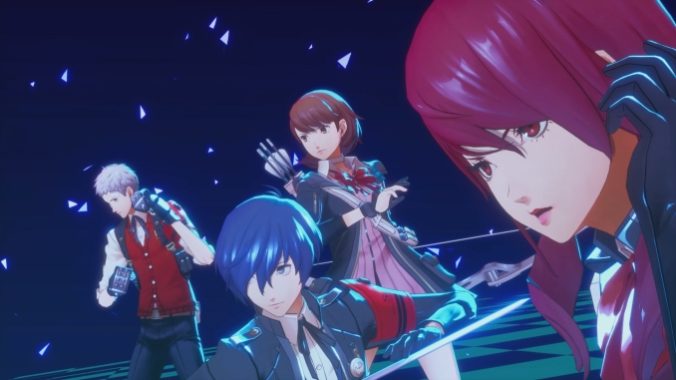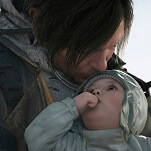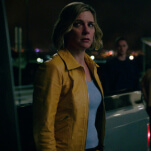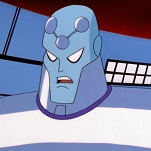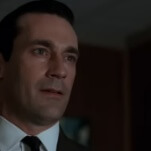Though I was encouraged by the plot to dive into Tartarus—more on that in a bit—I took some time first to explore some of the freshly redone overworld of Gekkoukan High School and the surrounding city, Tatsumi Port Island, in Persona 3 Reload. When I played P3P years ago, I didn’t realize the portable version of the game didn’t have a fully 3D overworld like the other titles I’d played in the series. At the time, the revelation shattered my expectations of Persona 3 and before long, I put it down in disappointment and walked away. Naturally, I had to see even a slice of what I’d missed. What I found was deeply familiar, both to my chagrin and delight. Don’t get me wrong, everything seemed present in the version of the game I played and the UI seemed painstakingly modernized—I especially liked the map’s slick train animation as you’re ferried between points of the island—but I felt no real pull to the city, the social links, and the activities available in my short time because I’d more or less seen it done before in other games of the series. It’s well within reason to assume this wrinkle I had with the content could be due to the preview environment and not the game itself though. Being dropped into the midsection of Persona 5 and being let loose for an hour in Shibuya would’ve felt similarly disjointed.
Because of this, I spent most of my time climbing Tartarus, Persona 3 Reload‘s sole dungeon: a bizarro skyscraper that only appears at a certain time of night and which the protagonists of P3 must work through. While the visuals here are certainly a feast compared to the original PS2’s vision, something of the original malice of Tartarus is missing here. To be clear, Tartarus is a concept that worked within the constraints of the PS2 to become a menacing, almost torturous, locale to explore. The monotony of the same drab floors, the limited field-of-view and camera placement, as well as Shoji Meguro’s composition all worked in harmony to create an existential horror and one of gaming’s more iconic liminal spaces. Persona 5‘s maximalist visual style that’s employed in Persona 3 Reload just doesn’t complement that feeling P3 once imparted.
My trek into Tartarus did yield a pleasant surprise with the introduction of Persona 3 Reload‘s Theurgy mechanic, a new meter tied to ultimate attacks that the SEES crew can now unleash. In an apparently new scenario written for the remake, the party gets split up traversing between floors and the challenge of taking on the shadows alone pushes one character to an emotional peak, at which point they are able to use Theurgy to use a slick new move players will be able to pocket for the right occasion. Different characters build their Theurgy meter uniquely, so one character will have to build it up via landing critical hits, whereas another gets theirs by using healing skills on the party. Though it’s no game-changer, it’s a welcome addition that seems poised to at the very least make players (especially new ones) consider how to utilize their party to their full potential and reward that behavior.
Before long my time in Tartarus and with Persona 3 Reload drew to a close. My feelings towards the remake remain the same. That is to say, I wish it didn’t feel like the friction of the original was the price to pay to get this remake in particular. I don’t know what Persona 3 Reload actually gains in the process that is worth that cost. Hearing about the original’s thorniness, the gloom and oppressive atmosphere of Tartarus, the fact that social links could be broken, and more was what made Persona 3 stand apart from its more successful follow-ups, which makes the changes obvious. Having a new special attack doesn’t quite fill the hole left by those (and larger) omissions. I really like how much of a black sheep that original feels like, and while I’ll more than likely just pick up an older version of the game as well as play Reload, it’s a shame that the prevailing mindset seems unable to (or unwilling to) make room for something a smidge pricklier.
Moises Taveras is the assistant games editor for Paste Magazine. He was that one kid who was really excited about Google+ and is still sad about how that turned out.
